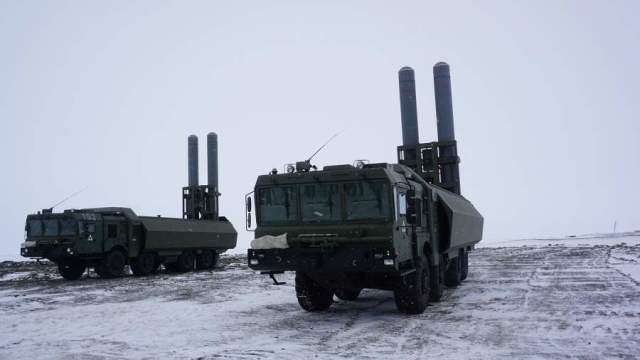Moscow. March 8th. INTERFAX - The Baltic Fleet of the Russian Federation against the background of two US destroyers entering the Baltic Sea reported exercises with Bastion anti-ship missile systems.
"The calculations of the Bastion coastal missile systems of the Baltic Fleet conducted a planned training on the defense of the coast of the Kaliningrad region in the event of a threat of missile strikes by ship groups of a conditional enemy from the Baltic Sea," the press service of the Baltic Fleet of the Russian Federation reported on Tuesday.
"The ships of the fleet, currently performing tasks at sea, acted as ships of the conditional enemy. About 100 military personnel and over 10 units of automotive and special equipment have been involved in working out the tasks," the fleet said.
On March 7, the National Defense Control Center of the Russian Federation announced that the Russian military began tracking US destroyers that entered the Baltic Sea.
"The forces and means of the Baltic Fleet have begun tracking the actions of the US Navy destroyers with guided missile weapons "Donald Cook" and "Forrest Sherman", which entered the waters of the Baltic Sea," the National Center said in a statement.
"The calculations made a march from the point of permanent deployment to the designated area, worked out the standards for alerting launchers and organizing camouflage, and also performed algorithms for obtaining target designation and striking a detachment of ships of a conditional enemy with electronic (conditional) missile launches," the press service of the Baltic Fleet of the Russian Federation said.
The Bastion anti-ship missile system (NPO Mashinostroeniya, Tactical Missile Armament Corporation) has been developed in two versions - the mobile Bastion-P and the stationary Bastion-S. The complex is equipped with a supersonic homing anti-ship missile "Onyx".
Bastion is designed to protect the seashore and defeat surface ships of various classes and types operating as part of amphibious formations, convoys, ship and aircraft carrier strike groups, as well as single ships and ground-based radio-contrast targets in conditions of intense fire and electronic countermeasures.
Bastion complexes are deployed in all fleets of the Russian Navy. The flight range of the Onyx missile of the Bastion DBK is up to 500 km.
On November 15, 2016, such a complex deployed in Syria was used for the first time by the Russian military to defeat ground targets. Cruise missile strikes hit the facilities of the "Islamic State" (a terrorist organization banned in Russia). At the same time, it was announced that the firing range of this complex for ground targets is 450 km.
The Baltic Fleet is an operational and strategic association of the Russian Navy on the Baltic Sea. According to the website of the Ministry of Defense of the Russian Federation, the main bases are Baltiysk (Kaliningrad region) and Kronstadt (Leningrad region).
It was officially reported that in the Kaliningrad region, the Russian military has modern coastal missile systems "Bal" and "Bastion", as well as long-range air defense systems S-400 "Triumph" (Almaz-Antey concern).
In 2016, the 11th Army Corps was formed as part of the Baltic Fleet in the Kaliningrad Region.
In May 2018, it was officially reported that the missile brigade in the Kaliningrad Region had been re-equipped with the Iskander-M operational and tactical complexes from the Tochki-U to the Iskander-M operational and tactical complexes.
The recent reinforcement of the army corps by a new motorized rifle division was officially reported. The Russian military claimed that the new division was a response to the growth of NATO activity near the Russian borders.


